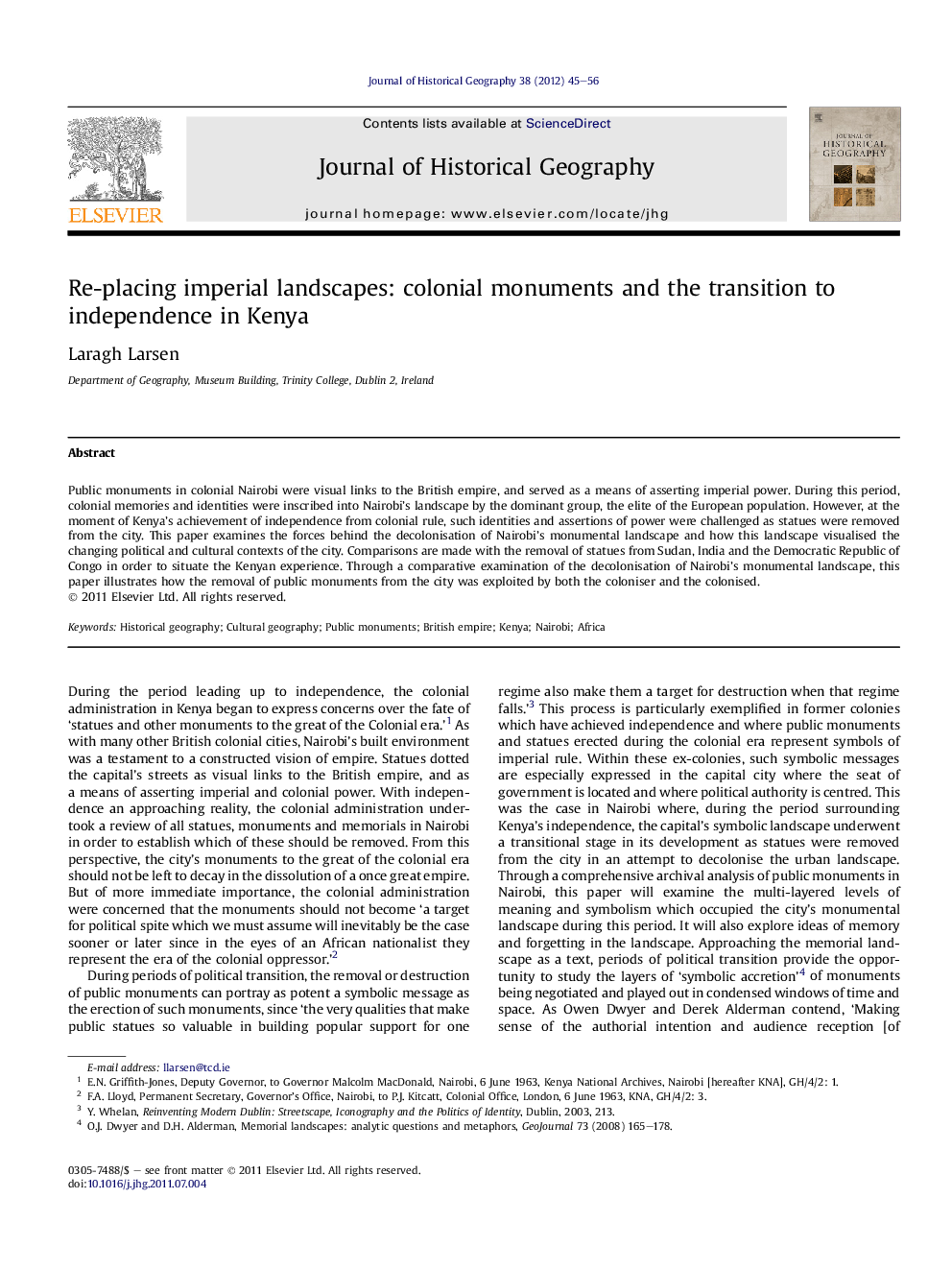| Article ID | Journal | Published Year | Pages | File Type |
|---|---|---|---|---|
| 1039272 | Journal of Historical Geography | 2012 | 12 Pages |
Public monuments in colonial Nairobi were visual links to the British empire, and served as a means of asserting imperial power. During this period, colonial memories and identities were inscribed into Nairobi’s landscape by the dominant group, the elite of the European population. However, at the moment of Kenya’s achievement of independence from colonial rule, such identities and assertions of power were challenged as statues were removed from the city. This paper examines the forces behind the decolonisation of Nairobi’s monumental landscape and how this landscape visualised the changing political and cultural contexts of the city. Comparisons are made with the removal of statues from Sudan, India and the Democratic Republic of Congo in order to situate the Kenyan experience. Through a comparative examination of the decolonisation of Nairobi’s monumental landscape, this paper illustrates how the removal of public monuments from the city was exploited by both the coloniser and the colonised.
► The paper examines the fate of colonial monuments in the dissolution of empire. ► It highlights changing identities and memories in Nairobi’s symbolic landscape. ► Comparisons are made with Sudan, India and DRC to situate the Kenyan experience. ► The removal of monuments is a tool used by both the coloniser and the colonised.
